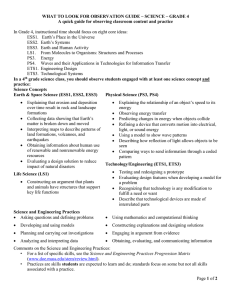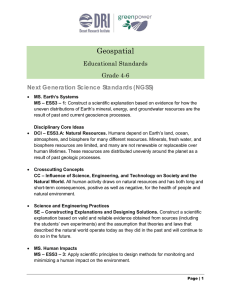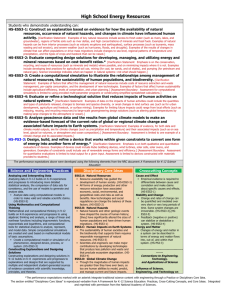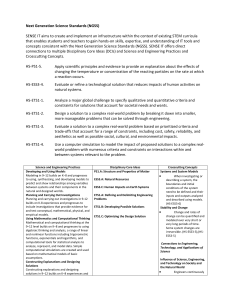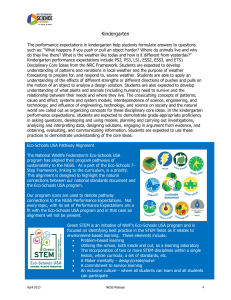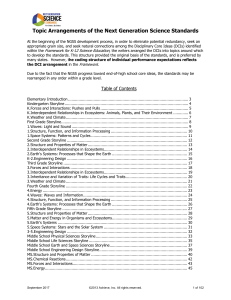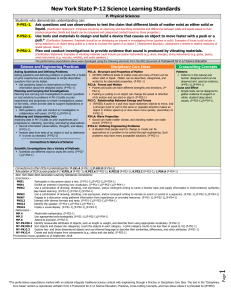3-ESS3 Earth and Human Activity
advertisement
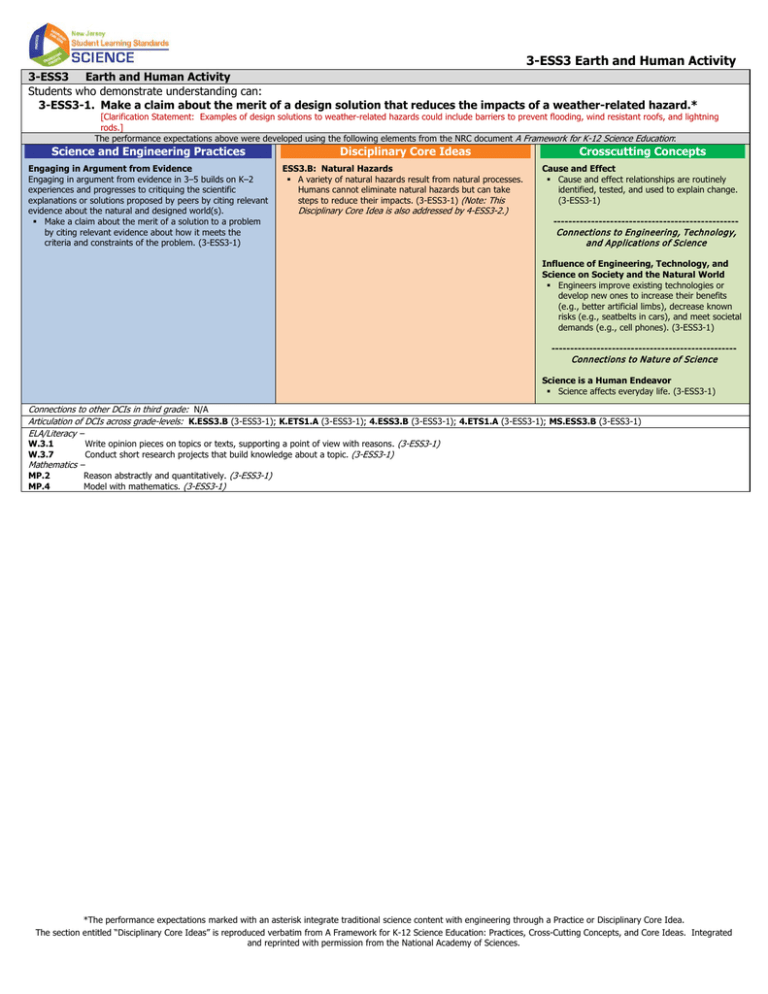
3-ESS3 Earth and Human Activity 3-ESS3 Earth and Human Activity Students who demonstrate understanding can: 3-ESS3-1. Make a claim about the merit of a design solution that reduces the impacts of a weather-related hazard.* [Clarification Statement: Examples of design solutions to weather-related hazards could include barriers to prevent flooding, wind resistant roofs, and lightning rods.] The performance expectations above were developed using the following elements from the NRC document A Framework for K-12 Science Education: Science and Engineering Practices Disciplinary Core Ideas Engaging in Argument from Evidence Engaging in argument from evidence in 3–5 builds on K–2 experiences and progresses to critiquing the scientific explanations or solutions proposed by peers by citing relevant evidence about the natural and designed world(s). Make a claim about the merit of a solution to a problem by citing relevant evidence about how it meets the criteria and constraints of the problem. (3-ESS3-1) ESS3.B: Natural Hazards A variety of natural hazards result from natural processes. Humans cannot eliminate natural hazards but can take steps to reduce their impacts. (3-ESS3-1) (Note: This Disciplinary Core Idea is also addressed by 4-ESS3-2.) Crosscutting Concepts Cause and Effect Cause and effect relationships are routinely identified, tested, and used to explain change. (3-ESS3-1) ------------------------------------------------- Connections to Engineering, Technology, and Applications of Science Influence of Engineering, Technology, and Science on Society and the Natural World Engineers improve existing technologies or develop new ones to increase their benefits (e.g., better artificial limbs), decrease known risks (e.g., seatbelts in cars), and meet societal demands (e.g., cell phones). (3-ESS3-1) ------------------------------------------------- Connections to N ature of Science Science is a Human Endeavor Science affects everyday life. (3-ESS3-1) Connections to other DCIs in third grade: N/A Articulation of DCIs across grade-levels: K.ESS3.B (3-ESS3-1); K.ETS1.A (3-ESS3-1); 4.ESS3.B (3-ESS3-1); 4.ETS1.A (3-ESS3-1); MS.ESS3.B (3-ESS3-1) ELA/Literacy – W.3.1 Write opinion pieces on topics or texts, supporting a point of view with reasons. (3-ESS3-1) W.3.7 Conduct short research projects that build knowledge about a topic. (3-ESS3-1) Mathematics – MP.2 Reason abstractly and quantitatively. (3-ESS3-1) MP.4 Model with mathematics. (3-ESS3-1) *The performance expectations marked with an asterisk integrate traditional science content with engineering through a Practice or Disciplinary Core Idea. The section entitled “Disciplinary Core Ideas” is reproduced verbatim from A Framework for K-12 Science Education: Practices, Cross-Cutting Concepts, and Core Ideas. Integrated and reprinted with permission from the National Academy of Sciences.

